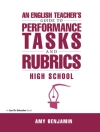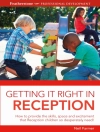‘This book is about a vital aspect of healthcare; that is, how people collaborate. At the heart of this book is the RESPECT Model of Collaboration in healthcare produced during a doctoral research project. Following this research a number of practitioners have explored this model in their practice and they were invited to write up their experiences and insights in a number of chapters in this book.
The intended audience for this book includes healthcare practitioners, educators, managers and others with an interest in how people in healthcare collaborate. Readers will be invited to look at ways that this dynamic model can be utilised insightfully in their practice.
In the RESPECT Model, collaboration is presented as:
R Reflexive
E Endeavours (in)
S Supportive
P Practice (for)
E Engaged
C Centred-on-People
T Teamwork.
There are four sections in the book:
<
Professional relationships
A study of collaboration in healthcare
Applying the RESPECT Model of Collaboration in healthcare practice
Educational applications of the RESPECT Model of Collaboration.’
Mục lục
Series introduction: Practice, Education, Work and Society.- Acknowledgement.- Preface.- Glossary.- Section 1: Professional relationships.- Reinterpreting professional relationships in healthcare: The question of collaboration.- Healthcare as a context for collaboration: More than we can easily see.- Section 2: Study of collaboration in healthcare.- Researching collaboration and collaborating.- The RESPECT Model of Collaboration.- Valuing ordered and organic collaboration: People, place, process and purpose.- Experience dimensions of collaborating: Engaging, entering, establishing, envisioning and effecting.- Reviewing dimensions of collaborating: Reflexivity, reciprocity and responsiveness.- RESPECT: An aporia of collaborating in and across all levels of healthcare.- Section 3: RESPECT Model of Collaboration in healthcare practice.- Rhythms of collaborative practice: Being in and out of sync with others.- Entering and leaving teams: Team roundabouts.- Collaborating within professions: Many layers and many roles.- Collaborating across different healthcare cultures.- Collaborating across white and black spaces: The power of language.- Collaborating in community rehabilitation: A person-centred, student-assisted service.- Collaborating with colleagues across distances: Face-to-face versus tele- and video-conferencing.- Section 4: Educational applications of the RESPECT Model of Collaboration.- Working across health and education sectors: Acknowledging different starting points for interagency collaboration.- Community collaboration beyond the red tape: Complying without being constrained.- Rural clinical education through the lens of community engagement: Interdependency of relationships within rural community-engaged clinical education.- Putting interprofessional education into practice: Is it really as simple as it seems?.- Students’ experiences of learning to work with other professions: If we read enough patient notes will we learn collaboration?.- Students using storytelling for learning to practise together.- Scrutinising our assumptions of the other professions: Acknowledging and supporting the diversity within.- Learning about leadership and collaboration in interprofessional education and practice.- Contributors.












